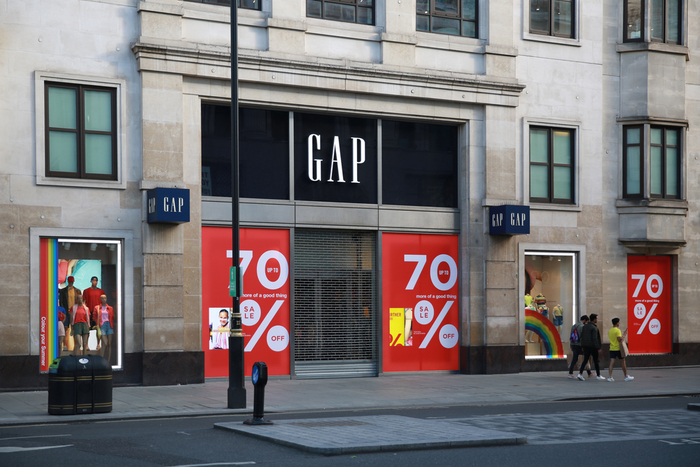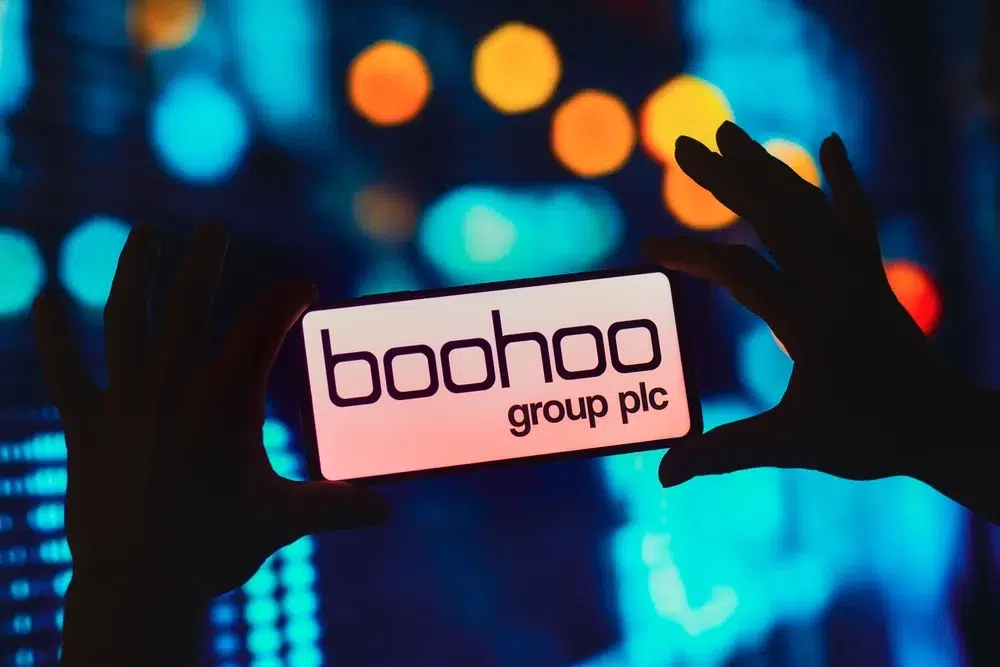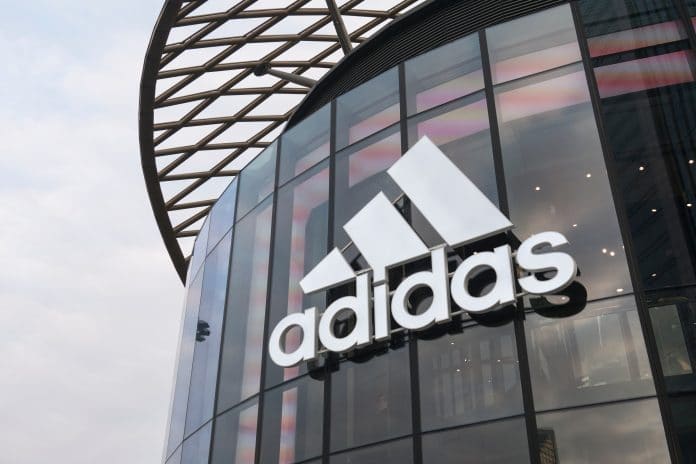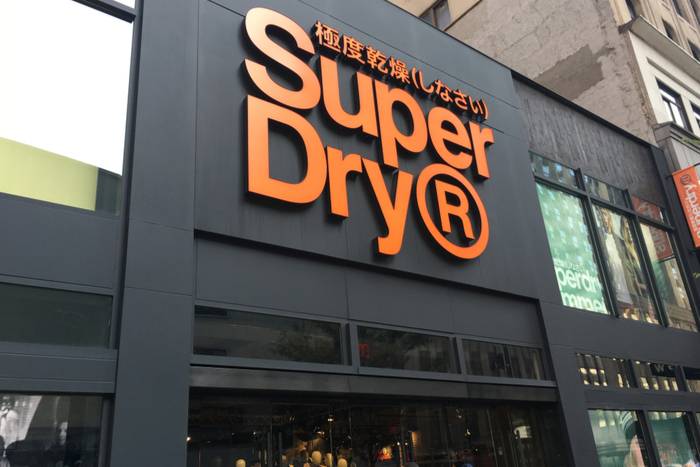A BRIEF TIMELINE
1969: Gap was founded by commercial real estate broker Donald Fisher and his wife Doris F. Fisher, with the idea to “make it easier to find a pair of jeans that fit with a commitment to do more”.
The Fishers named Gap as short for “generation gap”. Donald originally wanted to name it “Pants and Discs”.
Donald was a friend of Levi Strauss president Walter Haas Jr and also had an agreement with him around stocking jeans in stores.
The Fishers raised $63,000 to open the first Gap store on Ocean Avenue in San Francisco on August 21. Its only merchandise at the time consisted of Levi’s and LP records to attract a younger customer base.

1970: Gap opened its second store in San Jose, California.
1971: Gap established its corporate headquarters in Burlingame, California with just four employees at the time.
1972: Gap had grown from one store to 25 stores. Gap also applied for a trademark on its name with the United States Patent and Trademark Office.
1973: Gap had over 25 locations and had expanded into the East Coast with a store in the Echelon Mall in Voorhees, New Jersey. Gap also started producing its own-brand jeans as a way to differentiate itself from department stores.
1974: The first Gap label products appeared in stores.
1975: Gap stoked controversy when it ran an ad picturing unzipped jeans with the headline “The Gap is open”.
1976: The Gap Stores went public with an initial offering of 1.2 million shares of stock at $18 per share and more.
1983: Gap purchased small safari-themed clothing retailer Banana Republic and rebranded it as an upmarket clothing retailer. Gap also appointed Mickey Drexler as president. He joined to transform the brand and revamp stores.

1986: Gap moved into new apparel categories, including childrenwear, leading to the launch of Gap Kids.
1987: Gap expanded outside the US for the first time, opening its first international store in London, UK. Drexler developed separate collections for men and women and doubled the number of styles for women.
1988: Gap debuted its blue square logo, replacing the round, lowercase letters in use since 1969.
1990: Gap assumed an upscale identity and revamped its inventory under the direction of Drexler. BabyGap was launched to offer a selection of baby clothes.
1991: Gap said it would no longer sell Levi’s products in Gap stores. Donald Fisher said Gap was the second-best selling retailer in US clothing, behind Levi’s.
1994: Gap launched Old Navy as a value fashion chain, with the first store opening in Colma, California. Gap also launched Gap Outlet stores as part of the new Gap Factory Outlet division.

1999: Reports surfaced that Gap’s sweatshop workers in Saipan, Northern Mariana Islands, were not being paid for overtime work and were being subjected to unsafe working conditions and forced abortion.
2002: Drexler was forced to announce his retirement by Donald Fisher, after his management style clashed with the Fisher family. Drexler refused to sign a non-compete agreement and moved on to being chief executive of J. Crew. Paul Pressler joined Gap as the new chief executive.
2004: Donald Fisher stepped down as chairman of the board, continuing to sit on the board of directors with the title chairman emeritus. His son Robert J. Fisher succeeded as chairman.
2007: BBC footage showed child labor in Gap’s Indian factories. The retailer denied knowledge of the incident and subsequently removed and destroyed the single piece of clothing in question, a smock blouse, from a British store. Gap also pledged to investigate breaches in its ethical policy, while Pressler announced his resignation as chief executive. Robert J. Fisher stepped in to serve as chief executive on an interim basis.
2009: Donald Fisher dies.
2010: Gap introduced a new logo in an effort to establish a contemporary presence. It was designed with the Helvetica font and reduced the prominence of the brand’s iconic blue box. However, the retailer reverted to its previous blue box logo after less than a week due to public outcry.
2011: As a result of the logo backlash, Marka Hansen, the executive who oversaw the change, resigned. Gap also revealed plans to close 189 US stores and a global brand structure that saw Steve Sunnucks promoted to global president.
2013: Gap said it intends to expand its presence in China. It also said it would open its first stores in Brazil. Gap formed Alliance for Bangladesh Worker Safety to improve factory conditions in Bangladesh.
2014: Gap appointed Jeff Kirwan as president.
2015: Art Peck joined Gap as the new chief executive.

2015 (cont’d): Gap announced plans to close its subsidiary Piperlime in order to focus on core brands. The retailer also reported its worst performance since 2011. This saw it announce a series of “strategic actions” for improved business performance, including the closure of 175 underachieving stores in the US and some across Europe, as well as axing 250 jobs across its headquarter workforce.
2016: Gap sparked controversy over a sexist advertising campaign for its kids range. The campaign featured a young boy wearing a t-shirt with Albert Einstein on the front, captioning “little scholar… your future starts here”, while a similar picture of a young girl had the caption “social butterfly… talk of the playground”.
2017: Teri List-Stoll was appointed to the role of Gap chief financial officer.
2018: Gap’s ad campaign featuring a young girl wearing a hijab stirred up controversy in France. Kirwan stepped down from his role as Gap president. Gap also closed down all Banana Republic stores across the UK.
2019: Gap said Old Navy will spin-off from the bhsiness, making it independent from the company. Peck resigned as Gap chief executive.
Gap also said it would close down over 230 stores as part of its global restructuring programme. It revealed plans to separate into two companies, one of which will be the Gap brand and others including Banana Republic. It said the separation would “enable both companies to capitalise on distinct priorities, growth drivers and unique positioning in evolving apparel market”.
Gap said it had already shut down 55 of its stores, which leaves 742 stores globally at the time.
2020: Gap announced that the decision to separate Old Navy from the company had been called off. Gap chief marketing officer Alegra O’Hare stepped down after spending less than a year in the role, while Sonia Syngal joined as new chief executive.
Gap launched new clothing line Yeezy Gap, which was created in partnership with Kanye West and Yeezy.
Gap also said it would close over 225 stores as a result of the Covid-19 pandemic. The original pre-pandemic plan was to close only 90 stores, but this number increased due to the financial effects caused by the crisis.
Board member Bobby Martin was promoted to executive chairman, replacing current chair Bob Fisher – who had been acting as interim chief executive since Peck’s departure.
Old Navy chief financial officer Katrina O’Connell was promoted to the role of Gap chief financial officer.
Meanwhile, Gap partnered with Afterpay to improve its digital shopping experience.
In the first quarter ending May, Gap plunged to a loss of $932 million (£740 million) as store closures from the pandemic affected its finances.
In the second quarter ending August 1, Gap’s like-for-like sales rose 13 per cent, while overall net sales dropped 18 per cent to $3.28 billion (£2.43 billion). Online sales skyrocketed by 95 per cent during the quarter but this was not enough to offset the 48 per cent drop in store sales.
In October, Gap revealed that it was considering the closure of its entire European store estate in 2021 placing hundreds of jobs at risk. The retailer said it wanted to operate in Europe through “partnerships” – both online and in stores. In December, Gap said it would close one of its two stores on Oxford Street in central London.

2021: In February, reports emerged of Gap being at war with its landlords after telling them it plans to shutter its shops across the UK in July. The retailer reportedly offered landlords to pay reduced rent until July.
In June, Gap said it would permanently close 19 stores across the UK and the Republic of Ireland once leases expire on July 31.
In July, Gap confirmed it would shut down all 81 of its stores in the UK and Ireland by the end of this year. It intends to take its business online “in a phased manner” from the end of August through to the end of September.
Gap added it would provide “support and transition assistance” to colleagues following the closures, though did not specify how many employees would be affected by the store closures.
THE REASONS
Donald Fisher was a real estate developer when he co-founded Gap with his wife Doris. He was unable to find the right size of Levi’s jeans in a department store in Sacramento, California, when he thought of selling them through a chain of small stores devoted solely to that product.
With the help of his wife, Fisher opened a shop near San Francisco State University in one of his own buildings, offering a combination of music records and Levi’s jeans. The intention was to attract jeans customers by means of the records.
At first no one noticed the jeans, and Fisher was driven close to bankruptcy. In desperation, he placed ads in local newspapers announcing the sale of “four tonnes” of jeans at rock-bottom prices, and the clothes were soon gone.
“Gap’s biggest problem was its fundamental inability to adapt & innovate”
Although the Fishers had no experience in retailing, their stores’ combination of jeans, low prices, and wide selection proved irresistible to the huge market of 14-to 25-year-olds.
For the next couple of years, Gap dressed people in affordable and well-designed iterations of US staples: t-shirts, chinos and denim.
When Drexler joined, he created a large in-house design staff to develop clothes that would be casual, simple, made of natural material, and clearly differentiated by gender than jeans. The new look was informal but classic, while still denim-based. It included a variety of shirts, skirts, blouses, and sweaters in assorted colours and weaves.
Arguably, Gap’s growth was also made possible by the extensive national advertising of Levi Strauss, which provided 100 per cent of Gap’s merchandise during its early years.
Like other retailers who have been forced to shutter stores, Gap has undoubtedly failed to adapt to changing consumer behaviours as well as fashion trends.
Covid-19 has accelerated the difficulties for many retailers, with many big chains closing stores and famous names such as Debenhams and Topshop disappearing from the high street completely.
Gap has also been slow to invest heavily enough in its online channel while other retailers have introduced click-and-collect, next-day delivery or have partnered with fellow brands such as Asos – particularly in the wake of the pandemic.
Gap is also the latest retail casualty of the pandemic and the decision to close stores in the UK and Ireland in the coming months will add to the growing number of job losses in the sector.
“Gap has always held an iconic name, known for its laid-back American style, iconic denim, and timeless hoodies,” said David Grimes, chief executive of parcel delivery programme Sorted.
“Yet Gap’s biggest problem was its fundamental inability to adapt and innovate at the necessary pace.
“As the retail market moved to a faster model and shoppers shifted online, Gap remained resolutely the same.
“Despite evolving customer expectations, it stood by the tried-and-tested model of distributing the same product across markets with little variation and somewhat passively watched as ecommerce leaders such as Asos gain market share with their infinitely smoother and more agile online customer experience.
“Ultimately, this demonstrates how legacy brand loyalty is no longer enough to keep a competitive edge within the ‘new world’ of retail.”
“The pandemic is not the reason for Gap’s decline”
Melissa Minkow, retail industry lead at digital consultancy CI&T, argued that Gap was yet another example of how struggling mid-price retailers were no match for the huge challenges brought on by the pandemic.
“The retailers that have fallen during the last 15 months were already in trouble heading into Covid,” she said.
“To already be behind pre-Covid and then face a five-year shopping acceleration without massively overhauling omnichannel strategy and brand positioning was a recipe for defeat.”
James Pow, senior advisor at business advisory firm Quantuma, said Gap’s decision to close its British and Irish stores has come from a realisation that the huge variance between falling revenues and the combined operating costs made up of rent, rates and fixed costs salaries are unsustainable.
“Covid-19 has accelerated this demise exponentially and Gap has seen its position among its competitors change significantly, leaving them with just one option to defend the value of its brand – move to online-only,” he said.
Eleanor Thomas, spokesperson for online shopping app Wholee Prime, told Retail Gazette that Gap’s decision to pull out of high streets and focus purely on its online presence was a “damning indictment” of the British and Irish retail markets and the prospects for physical shops.
“Topshop, Marks and Spencer, John Lewis, the list of retailers either gradually disappearing or who have disappeared altogether from the high street goes on,” she said.
“The pandemic is not the reason for this decline, it has simply accelerated a process that has been ongoing for many years prior.
“The prospect of a major influx of consumers to more regular online shopping means that standards that were previously held against high street stores will be held against online retailers. Not just price and availability, but customer experience.”
Gap has faced a similar fate to retailers like Debenhams and Topshop, who also recently opted for an online-only approach after they were bought out by Boohoo and Asos respectively.
Despite the growing competition online, many retailers are considering opting for an online-only approach to keep up with demand and sidestep the costs associated with a physical retail presence.
For many retailers, an online-only model is much more cost-effective, while allowing brands broader consumer reach. Furthermore, the simplicity is inherent in having solely digital touch points is especially appealing in today’s world where data collection and analysis are the ultimate goals for a retailer.
Click here to sign up to Retail Gazette‘s free daily email newsletter


















